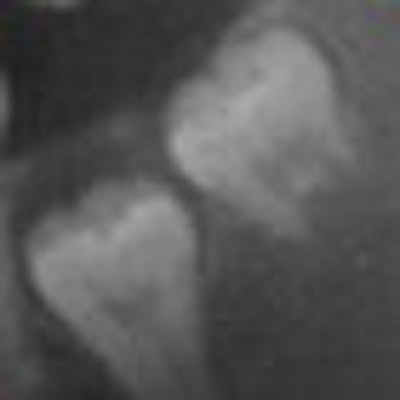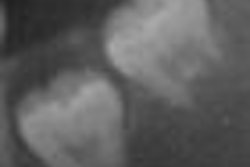
When it comes to asymptomatic impacted third molars in adults, many general dentists prefer to leave well enough alone. Rather than risk patient discomfort and potential dry sockets, they opt to monitor the tooth until problems develop. But is that decision best for the patient or simply easiest for the doctor?
"A lot of what we do is related to anecdote and individual experience," said Louis Rafetto, D.M.D., an oral and maxillofacial surgeon and former examiner for the American Board of Oral and Maxillofacial Surgery, during a session on this topic at the 2008 ADA meeting last week in San Antonio. Pathology always precedes symptoms, so the "wait and watch" approach is not always in the best interest of the patient, he said.
Dr. Rafetto made his case with an example from medicine, noting that "M.D.s don't wait for patients to get headaches before they treat hypertension." Similarly, changes in the cell markers in the tissue of wisdom teeth precede redness and pain.
That doesn't mean all third molars need to be removed, he emphasized. It is OK to monitor completely impacted third molars with full root formation in patients well into their third decade (25 years or older). Radiographs at two-year intervals on these teeth is reasonable.
For patients younger than 25, early removal minimizes the risk of postoperative pain, swelling, and infection. However, the National Institutes of Health (NIH) consensus statement issued in 1979 included the following warning that remains a standard of care:
"Although there are cogent orthodontic reasons for early removal of third molars, the group felt that the suggested practice of enucleation of third molar buds, based on predictive studies at age 7 to 9, is not currently acceptable."
(You can read the entire statement on the NIH Web site.)
Most extractions of third molars are on patients in their teens and early 20s. This population has many indications for removal, including periodontal defects, caries, pulpal/periapical involvement, lack of physiologic space, ectopic tooth position, interference with orthodontic tooth movement, medical necessity, resorption, interference with a prosthetic treatment plan, and pathology associated with a tumor.
The most common reason for removal is the lack of space for eruption and maintenance, which leads to chronic pericoronitis, according to Dr. Rafetto. Some doctors are still performing operculectomies on these teeth.
"Operculectomy is a nonproductive procedure.... All you've done is delay the inevitable removal of the teeth," Dr. Rafetto told the ADA audience.
The focus of his seminar was not technique but decision-making based on the latest scientific evidence. He made the topic slightly more entertaining than a dental school lecture by interspersing photos of his travels around the world with Health Volunteers Overseas with numerous slides of articles from oral surgery journals.
The highlight of Dr. Rafetto's two-and-a-half-hour lecture was his myth busters portion, in which he examined commonly held beliefs about third molars and confirmed or destroyed the myth:
Myth #1: The course of an uninterrupted third molar may be predicted.
Conclusion: No
It is not possible to predict in all cases. Inadequate hard tissue space is the most significant variable associated with third molar impaction. His online review of the literature demonstrated that third molars remaining AFTER a patient reaches the age of 25 can and do change position.
Myth #2: Third molar impaction contributes to dental crowding.
Conclusion: Yes (Sorta)
Oral and maxillofacial surgeons, orthodontists, and the general public have long associated incisor crowding with the eruption of the third molars because they often occur around the same time. The eruption of these teeth adds about 1.7 mm of crowding so it plays some role, but it may not be "clinically significant," according to Dr. Rafetto. He believes the causes of crowding are multifactional and removal should be based on other indications, as well.
Myth #3: All third molar sites heal the same.
Conclusion: No
Clinical research published in the Journal of Clinical Periodontology (January 1991, Vol. 18:1, pp. 37-43) by Kugelberg et al demonstrated that in young patients, alvelolar bone in the third molar areas repairs to normal levels, unlike in older patients. So age is an issue. Factors such as perio status, tooth position, and age contribute to the development of defects. In fact, the tissue on the distal of second molars has more of the pathologic, complex microorganisms associated with periodontitis.
While dentists can't predict the course of third molars, they may be able to predict who will have a more difficult recovery. Variables associated with prolonged recovery time include time (older patients), position below the occlusal plane, gender (females have more problems), and prior symptoms.
Corticosteroids, antibiotics, and pre-emptive analgesics do reduce swelling, infection, and pain. Like any procedure, it is important to inform patients of the risk, along with the benefits, of tooth removal.
Ultimately, removal of the third molars "can improve the quality of life for patients," Dr. Rafetto said. "Waiting for symptoms to appear is not necessarily good care."
To learn more about Dr. Rafetto and view educational videos and tutorials on wisdom teeth, visit www.drrafetto.com.



















